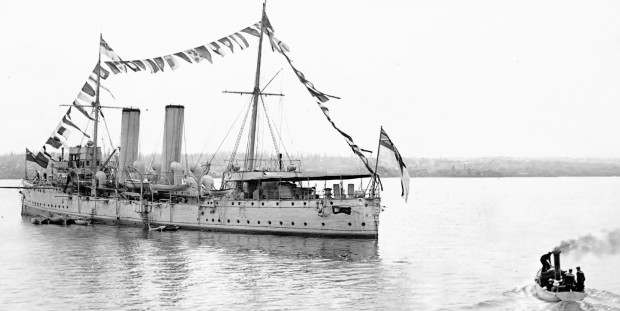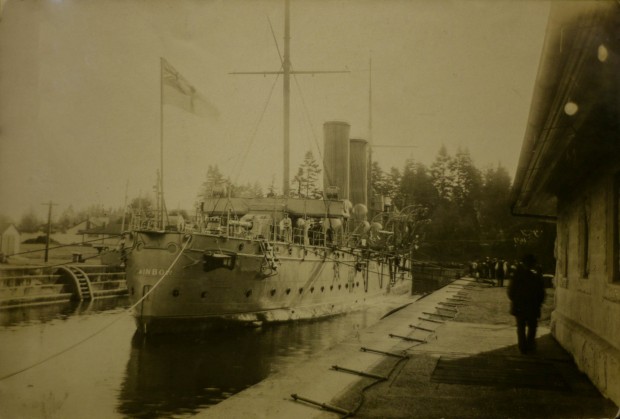
The Rainbow’s Legacy: What Might Have Been?
The Rainbow far superseded its planned mission as a training ship. When war came in 1914, it was pressed into a role it was obsolete to perform. Under the leadership of Commander Walter Hose, Rainbow gallantly sailed into situations it was known to be vastly outclassed in. Even after reinforcements arrived, the ship and its crew were eager to join the attack. They were never to shy from a mission. When the Rainbow was called upon, it answered and always performed to the best of its abilities. Although she is much celebrated for this service, the story of the Rainbow is a glaring remainder of how unprepared Canada’s Naval Service was for war. The fact she was required to courageously sail into imminent danger repeatedly is a fine demonstration of this fact.
Canadian Naval historians have been led question what would have happened had the Rainbow engaged in combat.[1] She most certainly would have been sunk by any of the opposition she ever got close to encountering. Her only hope would have been to utilize fog to get close to the German ships, and hope to land a disabling blow that might force the enemy to return home.[2] G.N. Tucker, writer of the Canadian Naval Services’ official history, posits “the young Canadian Naval Service would have benefited immeasurably and in a host of ways had the Rainbow been able to clothe herself in a mantle of glory… but this she could not reasonably hope to achieve.”[3] Had she been able to heroically confront the Germans, she might have been able to inspire further investment in the Canadian Navy. In another scenario, Marc Milner wonders what might have happened had the Rainbow “met her end in a blaze of glory off San Francisco.”[4] This was the stuff of legend, and perhaps would have inspired a more concerted naval defence of the dominion by Ottawa.[5] This could have in turn saved the lives of young men shipped off to the bloodshed in Europe.[6] None of this was to be, and as Milner puts it, “Rainbow, in no small way, sailed into obscurity.”[7] At the end of the First World War, the Canadian Navy remained small and ineffective. The Naval legacy of the Rainbow was to be minor at best.
Hope and Inspiration: The Rainbow and British Columbia
Although the Rainbow’s naval legacy was marginal, the impact of the ship on Victoria and the rest of Coastal British Columbia is not to be disparaged. When the Rainbow arrived in 1910, it was hailed as a fine example of what was to become of the Canadian Navy. Her presence inspired volunteers to join the Naval Service, even if they were often told to join the “real navy.”[8] She was used to imbue confidence while protecting fishing interests along the Province’s shoreline. She was often the object of celebration when making ports of call. When danger seemed imminent, the Rainbow offered a considerable amount of confidence and protection to communities fearing attack from German raiders.[9] Even when she was clearly outmatched, the Victoria newspapers championed their home ship.[10] The confidence she inspired indelibly had an effect on the public morale.[11] In 1918, a sea cadet corps in Victoria received the Rainbow’s name; this group exists to this day. So although the ship had a minimal tangible impact on the future of the Canadian Navy, the cadet corps bearing her name has been training eager young Canadian’s for naval service for nearly a century. The Rainbow may be gone, but she is not forgotten. Her legacy lives on.

Image Source: Maritime Museum of British Columbia
